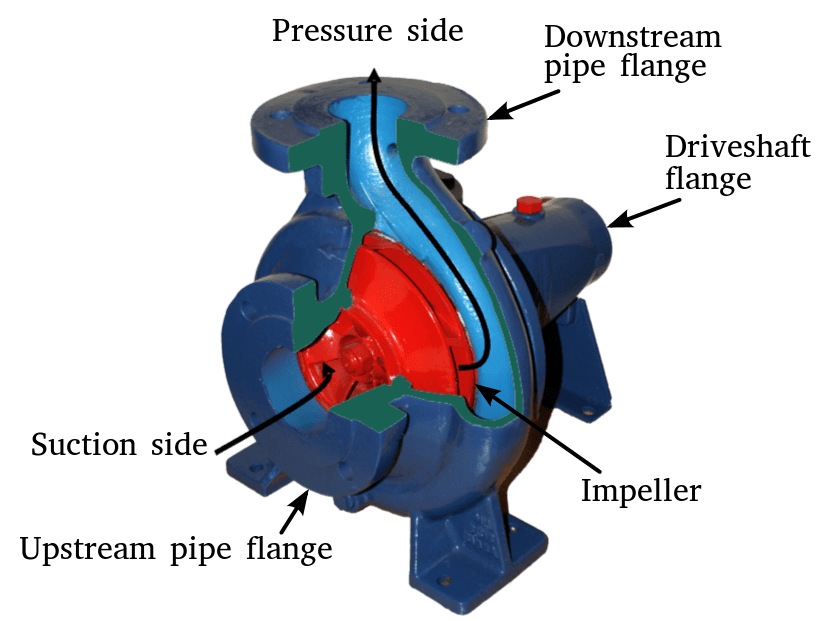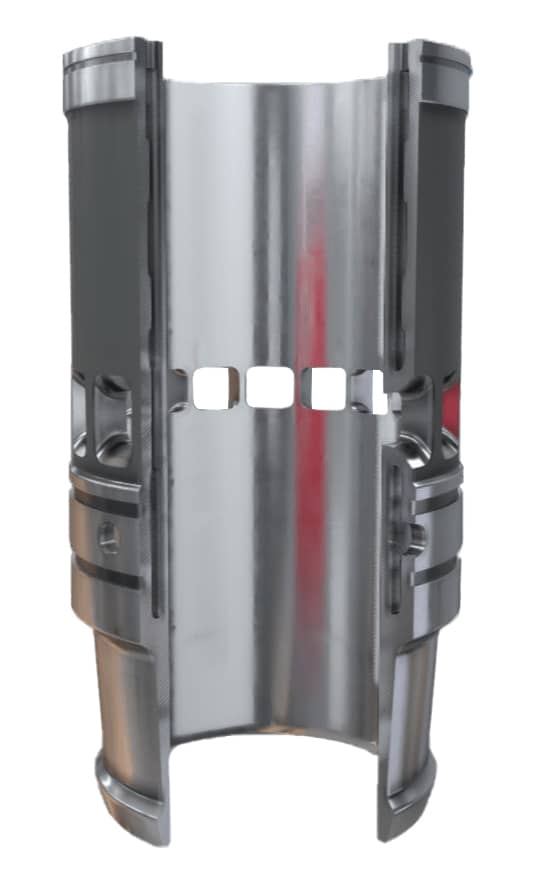Introduction
All internal combustion (IC) engines (four stroke and two stroke) require some form of temperature control in order that they do not overheat and seize. Some engines are air cooled whilst others are water cooled.
As a general rule, small engines (motorbike, lawnmower etc.) can be air cooled whilst all other types of engine must be water cooled. Larger engines are water cooled for several reasons:
- Water is plentiful and can be easily acquired in most locations.
- Water can remove more heat than air and thus has a larger cooling capacity.
- Water can be cooled remotely e.g. in a location away from the engine. This makes the cooling water system design more flexible.
A cooling water temperature of approximately 80°C (176°F) and cooling water pressure of 3 bar (44 psi) is standard for most engines operating under load.
Cooling water is sometimes referred to as 'jacket water' due to the 'jacket' of water surrounding the combustion space.
Cooling Water System Components
An engine cooling water system consists of a thermostat, cylinder sleeve, cooling water pump and a heat exchanger (radiator).

Engine Cooling Water System
A cooling water pump is required to circulate the cooling water throughout the engine. The pump is directly coupled to the engine crankshaft and thus its speed and output pressure is directly proportional to the engine’s speed. Most pumps are coupled to the engine using a belt, gear or chain, but this depends upon the size of the engine; very large engines use centrifugal pumps that are driven by electric motors.

A thermostat regulates the cooling water temperature and thus the engine temperature. The thermostat can warm the engine quickly by by-passing the radiator, or, cool the engine by distributing cooling water to the radiator. Its primary purpose is to ensure the engine does not overheat.

A radiator dissipates heat and prevents the engine overheating. In an automobile, the cooling medium is air, but larger engines often use a liquid as the cooling medium e.g. ship engines use seawater.

Engine Radiator
The cylinder sleeve ensures that cooling water is distributed evenly throughout the cylinder liner. Combustion occurs within the cylinder liner (combustion space), consequently, this space is the hottest part of the engine and must be correctly cooled. Cooling water enters at the base of the sleeve and is discharged at the top.

Enjoying this article? Then be sure to check out our Internal Combustion Engines Video Course! The course has a quiz, handbook, and you will receive a certificate when you finish the course. Enjoy!
How do Engine Cooling Water Systems work?
When the cooling water (jacket water) is cold, the thermostat by-passes the radiator and the temperature of the cooling water gradually increases until it reaches the optimum temperature.
When the cooling water is too hot, the thermostat directs it towards the radiator where the heat is dissipated in order that the engine does not overheat.
Click here to learn how a thermostat works.
Anti-Freeze and Thermal Expansion
The cooling water system is dosed with anti-freeze in order to prevent the water freezing in sub-zero temperatures (<0°C). If the cooling water should freeze, the engine would most likely be severely damaged because the water would expand and place large mechanical stresses upon the engine components. It is not unusual for the cylinder block to crack if the cooling water freezes.
A header tank is installed to allow for cooling water thermal expansion should too much cooling water be present within the cooling water system. The expanding liquid usually opens a valve on top of the radiator and exits to a remote storage area i.e. header tank or expansion tank etc.
Corrosion Inhibitors
Corrosion inhibitors are added to the cooling water system to protect the engine's internal components. The inhibitors keep the heat exchanging surfaces of the engine clean and prevent scale or rust accumulation. Fouling of the surfaces within the cooling water system would reduce the heat transfer rate and increase the risk of the engine overheating due to lack of cooling.
3D Model Components
This 3D model shows all major components associated with a typical engine cooling water system, these include:
- Thermostat
- Cooling Water Pump
- Radiator (Heat Exchanger)
- Header Tank (Expansion Tank)
- Cylinder Sleeve
Additional Resources
https://www.carparts.com/classroom/coolingsystem.htm
https://www.howacarworks.com/basics/how-an-engine-cooling-system-works
_1.png)